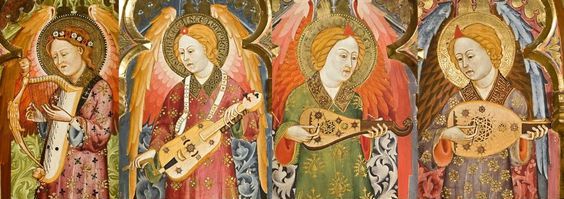
In dulci jubilo is one of the most recognisable and joyful melodies of the middle ages, but it carries one of the most shocking and astonishing stories. The song is first mentioned in 1328, sung and danced by an angel in a vision of Heinrich Suso, German Christian mystic of the 14th century, extreme practitioner of Christian self-mortification.
This article tells Heinrich Suso’s disturbed and disturbing life, and the continuing life of In dulci jubilo, its words repeatedly reworked over the centuries, from the original Latin and German into many vernacular languages, and its music transformed with new musical arrangements from the 14th to the 21st century.
We begin with a performance on medieval harp.

